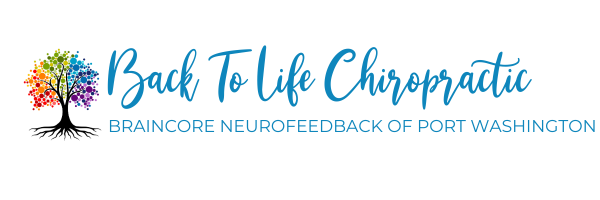
Procrastination—a challenge familiar to many—can be particularly pervasive for individuals with ADHD. Tasks pile up, deadlines creep closer, and motivation seems out of reach. It’s not about laziness or lack of care. For those with ADHD, procrastination often stems from neurological imbalances that make it difficult to focus and plan effectively. But what if there was a way to train the brain to overcome these barriers? That’s where neurofeedback comes in.
This article dives into how neurofeedback is transforming the lives of ADHD sufferers by addressing procrastination at its root cause, offering hope to parents, holistic health advocates, and anyone interested in unlocking the brain’s potential.
Understanding ADHD and Procrastination
ADHD (Attention Deficit Hyperactivity Disorder) is more than an inability to focus. It often involves struggles with executive functions—skills like organization, time management, and decision-making. These challenges make even starting a task feel overwhelming, leading to habitual procrastination.
At the core of this struggle are irregular patterns of brain activity in regions responsible for attention and impulse control. Without addressing these irregularities, it can feel impossible to break the procrastination cycle.
That’s where neurofeedback steps in with a solution grounded in neuroscience.
What Is Neurofeedback?
Neurofeedback is a non-invasive, drug-free therapy that trains the brain to regulate itself better. It’s based on the idea of “brain plasticity,” or the brain’s ability to change and develop new pathways.
How Does It Work?
- Mapping the Brain: A neurofeedback session begins with a quantitative EEG (qEEG), which measures the brain’s electrical activity. This creates a map of where irregular patterns—like heightened impulsivity or difficulty focusing—are present.
- Training the Brain: During sessions, individuals watch visual or auditory feedback, such as a movie or sound, while wearing sensors. These sensors monitor brainwaves in real time.
- Reinforcement: When the brain produces the desired, balanced brainwaves, the screen responds positively—like a movie playing smoothly. This reinforces healthy patterns of brain activity.
Over time, these sessions teach the brain to maintain better regulation, leading to improved focus, impulse control, and reduced procrastination.
How Neurofeedback Benefits ADHD and Procrastination
Neurofeedback addresses procrastination by targeting the brain’s underlying inefficiencies. Here are some key ways the therapy helps ADHD sufferers tackle procrastination head-on.
1. Improved Focus
One of the hallmark symptoms of ADHD is an inability to concentrate, often compounded by distractions or wandering thoughts. By training critical brain regions, neurofeedback helps improve sustained attention, enabling individuals to stay on-task and complete projects more effectively.
2. Enhanced Emotional Regulation
Procrastination doesn’t just happen because of distractions. For individuals with ADHD, it can be rooted in emotional overwhelm. Neurofeedback helps stabilize emotions, reducing stress and anxiety that often come with approaching deadlines.
3. Strengthened Executive Functioning
Tasks like prioritization, planning, and time management fall under executive functions—areas where ADHD presents significant hurdles. Regular neurofeedback sessions enhance the brain’s ability to organize and break down tasks, making them feel more manageable.
4. Boosted Motivation
Procrastination thrives when motivation is low. Neurofeedback can help balance dopamine levels in the brain, a key neurotransmitter related to reward and motivation. This encourages productivity and helps ADHD sufferers take the first step toward progress.
5. Long-Term Independence
Unlike some ADHD interventions that require ongoing reliance on medication or external motivation, neurofeedback builds lasting skills. By teaching the brain to self-regulate, individuals can enjoy long-term improvements in how they manage their time and tasks.
Why Neurofeedback Appeals to Holistic Health Advocates
For parents searching for solutions that don’t rely solely on medication, neurofeedback offers an empowering, holistic approach to ADHD management. It works alongside other natural interventions—like diet, mindfulness, or therapy—and fits seamlessly into a comprehensive lifestyle improvement plan.
More importantly, it gives individuals a sense of agency. They’re actively working to improve their brain’s health and functionality, which aligns perfectly with the principles of holistic and proactive care.
How to Get Started with Neurofeedback
Interested in exploring neurofeedback as a solution for ADHD and procrastination? Here’s how you can begin.
- Find a Trusted Provider
Look for clinics or providers specializing in neurofeedback therapy with strong reviews and a history of success working with ADHD.
- Schedule a Consultation
A reputable provider will start with a detailed consultation and QEEG brain mapping to understand your unique challenges.
- Commit to Regular Sessions
While many individuals notice improvements within a few sessions, long-term changes usually take consistent practice. Most programs recommend 20–30 sessions for lasting results.
- Stay Open to Complementary Strategies
Neurofeedback works best when combined with other ADHD management techniques, such as cognitive-behavioral therapy (CBT), exercise, and nutrition.
Empowering ADHD Sufferers to Take Control
Procrastination can feel defeating, but neurofeedback offers a tangible, science-backed way to break free from its grip. By retraining the brain, this therapy empowers those with ADHD to overcome procrastination and thrive in their personal and professional lives.
If you’re curious about neurofeedback or want help finding the right provider, reach out to [Your Brand/Clinic Name] today for more guidance. Together, we can unlock the potential of your brain.


0 Comments